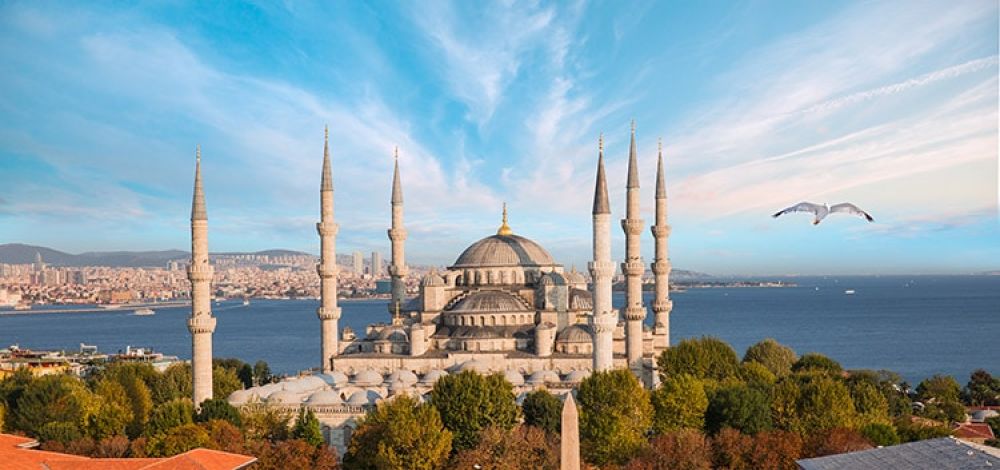

The Blue Mosque, also known as the Sultan Ahmed Mosque, is one of the most iconic structures in Istanbul, Turkey, and a quintessential symbol of the city's rich cultural tapestry. Built between 1609 and 1616 during the rule of Ahmed I, it is an exemplary piece of Ottoman architecture. Its six majestic minarets adorn Istanbul's skyline, while the interior is famed for its hand-painted blue tiles, giving it the nickname "Blue Mosque."
Historically, the mosque was constructed in an effort to reassert Ottoman power and it has since become one of the most significant pilgrimage sites for people of the Islamic faith. Its design, featuring a cascade of domes and semi-domes, was the culmination of two centuries of both Ottoman mosque and Byzantine church development.
Tourism at the Blue Mosque began shortly after its construction, initially attracting travelers and scholars interested in the splendors of the Ottoman Empire. Over time, it has become a must-visit location for tourists globally, with its doors open to people from all walks of life. The mosque's ability to function as both a place of worship and a tourist attraction is a testament to its enduring appeal and significance.
During the Ottoman era, visitors would often be astounded by the mosque's grandeur, the intricate calligraphy, and the vast prayer chamber. Over centuries, it has only grown in popularity, becoming a central part in the trip of any traveler visiting Istanbul.
In recent years, there has been a trend towards sustainable tourism in Istanbul, with a focus on preserving the city's historical sites, including the Blue Mosque. Tourists are also increasingly seeking authentic experiences, such as understanding the local culture, traditions, and the architectural history of important landmarks.
Another modern tourism trend is the increasing use of digital platforms and social media to enhance the visitor experience. Interactive apps now provide detailed tours and background information, allowing tourists to understand the historical context and significance of the mosque before even stepping foot inside. Furthermore, virtual reality technology is beginning to offer an immersive experience for those unable to physically visit the Blue Mosque.
As the world becomes more connected, experiential travel has surged in popularity, with visitors seeking personalized experiences over traditional sightseeing. In the case of the Blue Mosque, this can include understanding the role of Islam in Turkish culture, the history behind the mosque's construction, and the art of Islamic calligraphy and tile-making. The culture of hospitality in Turkey also ensures that visitors to the mosque are welcomed and have the opportunity to engage with locals for a more profound experience.
Today, the Blue Mosque continues to be an indispensable part of Istanbul's tourism industry, admired for its architectural brilliance and spiritual significance. It remains a bridge between the past and the present, and visiting the site is as much a journey through history as it is a spiritual pilgrimage.